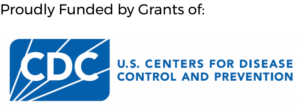
Strategic Plan
VISION
To lead the national movement to unify Local Health Departments (LHDs) nationwide through collaborative survey measurements, improve transparency, reduce or eliminate costs, and improve technology connectivity.
MISSION
To empower LHDs with a shared Public Health Library of Measurements at the national and state level, fostering transparency, collaboration, and efficiency in public health data collection and analysis.
Enhance Measurement Transparency & Collaboration
Three-Year Outcome Statement: AOS members actively share and utilize a standardized library of measurements, enhancing transparency and collaboration across all member LHDs.
Objectives:
- Establish and maintain the AOS Public Library of Measurements, accessible for all local health department members
- Conduct monthly state-level meetings to organize, index, and unify the survey measurement library and practices
- Partner with national associations (e.g. NACCHO, ASTHO) to integrate and strengthen measurement
Promote Technology Independence, Connectivity, and Efficiency
Three-Year Outcome Statement: AOS members leverage collective purchasing power to reduce survey software costs, ensuring HIPAA-compliant and technologically advanced data collection methods.
Objectives:
- Advocate for state and CDC grants to support bulk purchase of survey technology for member LHDs
- Implement training programs to ensure effective utilization of shared survey software and technological advancements
- Safeguard against siloed technological practices that hinder collaborative scientific work among members
Foster Equity and Inclusion of Rural Underfunded LHDs
Three-Year Outcome Statement: AOS members champion equity and inclusion of underfunded Local Health Departments by lobbying for grants and sharing the library, Measurement Standards, and Practices to ensure their diverse communities are never left behind.
Objectives:
- Increase equity in underrepresented Local Health Departments specifically in primary data collection
- Focus on the most underserved local health departments that struggle to represent their community with local public health data


